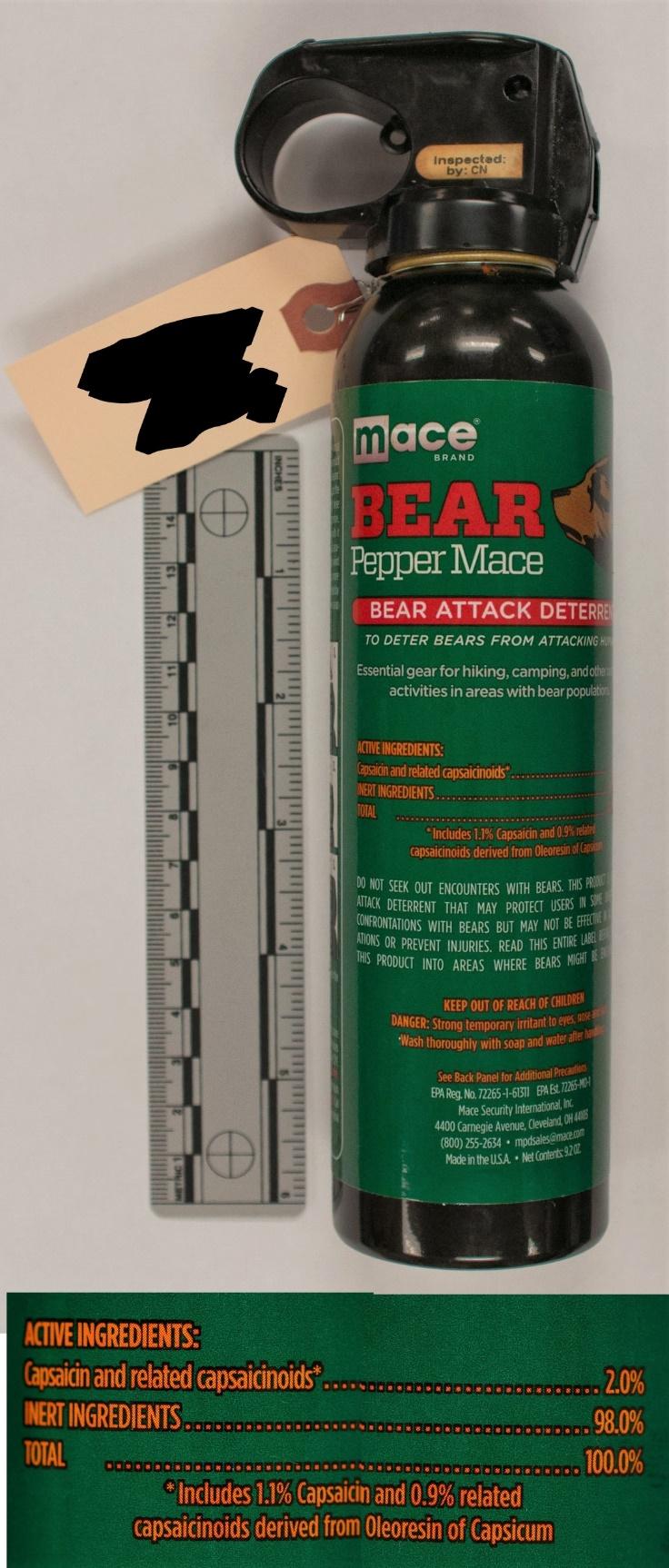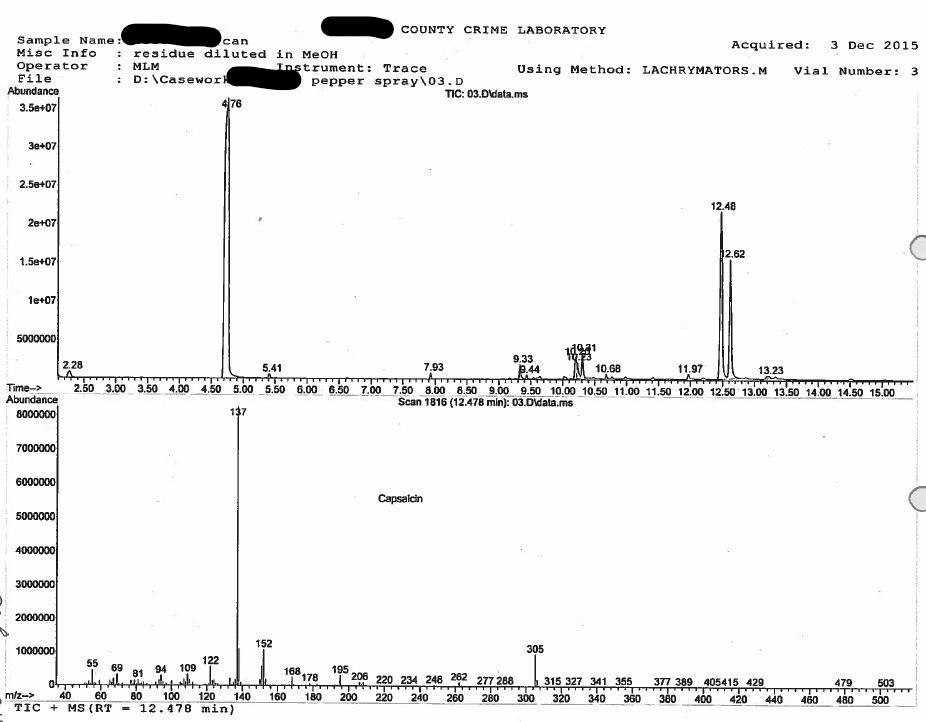Lachrymators/Pepper Spray Analysis
Contributed by Michelle Mercer
Lachrymators are substances that irritate the eyes and cause tearing. Examples of lachrymators include defense pepper sprays and tear gas, and they may also be a component of some bank dye packs. Although “mace” is commonly used to describe defense sprays, it is actually a brand name. These substances may be involved in various crimes with the request to be identified in their liquid state or as a dried stain on items such as clothing.
The three types of lachrymators tested in the laboratory are:
- O-chlorobenzalmalononitrile (CS)
- Chloracetophenone (CN)
- Oleoresin capsicum (OC) - various capsaicinoids or pepper extract, including capsaicin, dihydrocapsaicin, nordihydrocapsaicin and nonivamide
For suspected CS, CN or OC spray containers, a small amount of liquid is diluted in a solvent and tested by gas chromatography-mass spectrometry (GC-MS). For dried stains, a visual exam is performed first to document any obvious stains. Ultraviolet light may help visualize stains as some sprays include a fluorescent component. Potential stains are typically cut from an item and extracted in a solvent for GC-MS analysis. Alternatively, a solvent wash may be performed on an area if it is difficult to remove a portion. The GC-MS instrument allows identification of the lachrymator, if present, based on the comparison of retention time and mass spectrum to known reference lachrymators.
Case example:
A home invasion occurred, during which the homeowner sprayed bear pepper spray at one suspect.
The suspect was later apprehended with obvious irritation of their eyes and nose, and was observed
wiping their face onto their sweatshirt. Capsaicin and dihydrocapsaicin were identified in the
residue from the bear pepper spray container, in the mucus-type stains found on the sweatshirt,
as well as on the suspect’s hat. Along with other evidence, the identification of lachrymators
corroborated the victim’s account of events.
Additional References:
- Fung, T., Jeffery, W., and Beveridge, A. D., “The Identification of Capsaicinoids in Tear-Gas Spray”, Journal of Forensic Sciences, JFSCA, Vol. 27, No. 4. Oct. 1982, pp. 812-821.
- Mongan, A. L. and Buel, E., “Identification of Dog Repellent in the Clothes of an Assault Suspect Using Gas Chromatography/Mass Spectrometry”, Journal of Forensic Sciences, JFSCA, Vol. 40, No. 3, May 1995, pp. 513-514.
- Nowicki, J., “Analysis of Chemical Protection Sprays by Gas Chromatography/Mass Spectroscopy”, Journal of Forensic Sciences, JFSCA, Vol. 27, No. 3, July 1982, pp. 704-709.
- Sreenivasan, V. R. and Boese, R. A., “Identification of Lachrymators”, Journal of Forensic Sciences, Vol. 15, No. 3, July 1970, pp. 433-442.
Photo(s)

GC–MS Data
